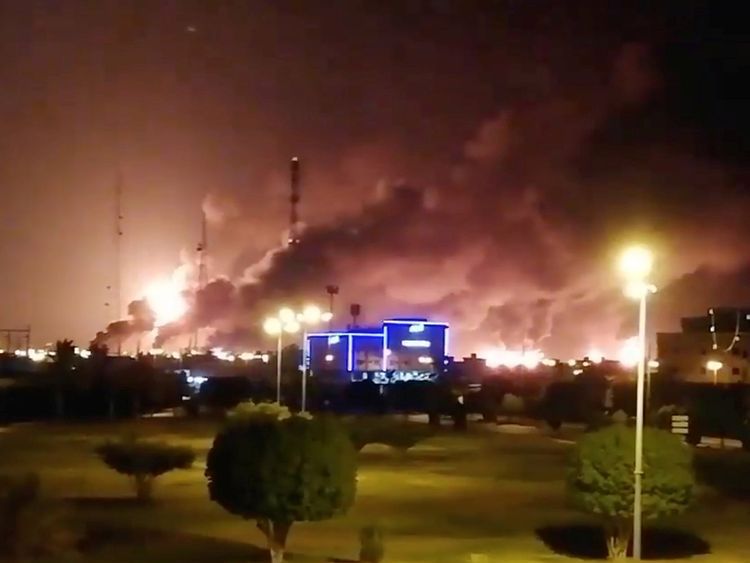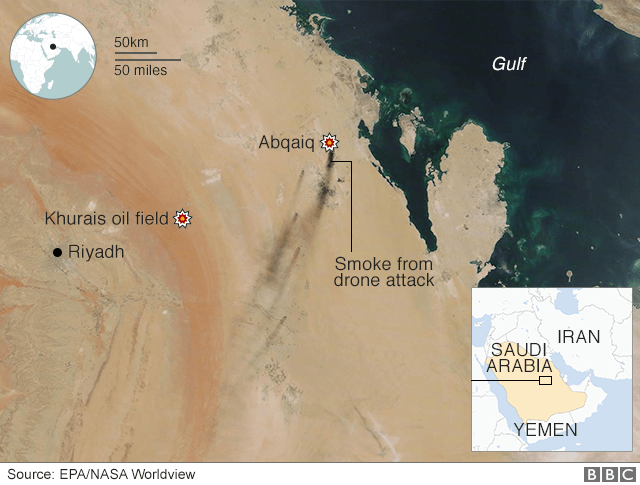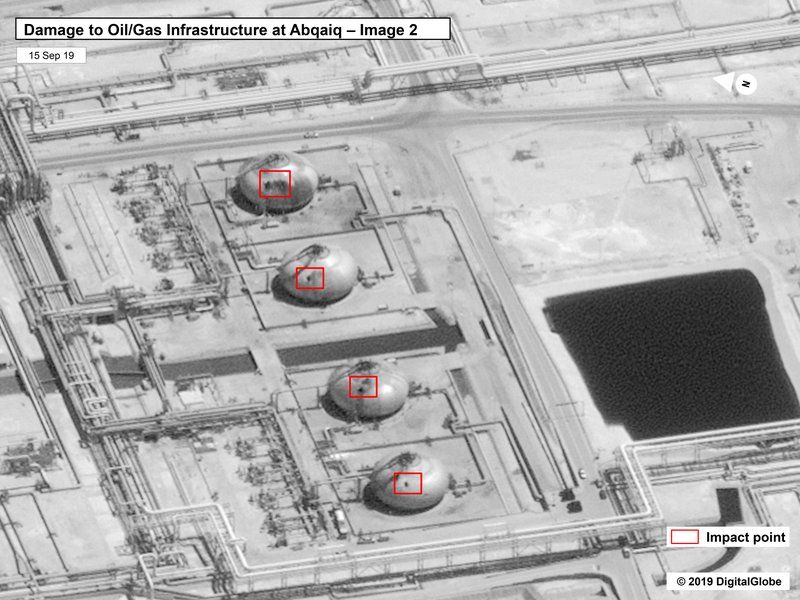US 'locked and loaded' as oil prices surge after Saudi oil attack

The US reiterated its stance that Iran was behind Sunday's attacks on Saudi Arabian crude oil facilities, despite a claim from Houthi rebels that they launched the attack from Yemen.
The strikes knocked out more than 5% of global oil supply.
President Donald Trump said: "There is reason to believe that we know the culprit," adding that the US was is "locked and loaded" and awaiting information from Saudi Arabia.
Senior US officials told reporters that damage from the attacks indicate they came from the direction of Iraq and Iran, not from Yemen.

Oil prices surged to six-month highs on Monday while Wall Street futures fell and safe-haven bets returned after Sunday's attacks.
U.S. crude futures were last up 11% at $61.10 a barrel, coming off highs on expectations other global oil suppliers would step in to lift output. Brent crude soared 13% at $68.06 after earlier rising to $71.95.
Yemen's Iran-backed Houthi rebel group had claimed responsibility for the attack, which hit the world's biggest oil-processing facility but a senior U.S. official told reporters on Sunday that evidence indicated Tehran was behind it.
The attacks heightened investor worries about the geopolitical situation in the region and worsening relations between Iran and the United States.

Those fears powered safe-haven assets, with prices for gold climbing 1% in early Asian trade to $1,503.09.
Moves in Asian share markets were small, however, with Japan shut for a public holiday.
MSCI's broadest index of Asia-Pacific shares outside Japan was a tick lower at 515.4. Australian shares were down 0.1% while South Korea's KOSPI was a tad higher.
E-Minis for the S&P 500 were off 0.4% while those for the Dow eased 0.3%.

"If risk appetite collapses due to fears of worsening middle east tensions in the wake of any retaliation to the drone attacks, some emerging markets could face a double whammy of pressures," said Mitul Kotecha, Singapore-based senior emerging markets strategist at TD Securities.
"In Asia, the most risk-sensitive currencies are Indian rupee, Indonesian rupiah and Philippine peso."









